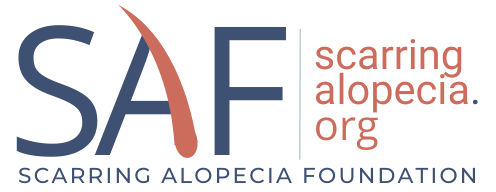Therapeutic Hotline: Effectiveness of the Association of Cetirizine and Topical Steroids in Lichen Planus Pilaris – An Open-Label Clinical Trial
Article Summary by Soneet Dhillon, MS | MD Candidate | Chicago Medical School
Lichen planus pilaris, also known as Lichen Planopilaris (LPP), is an inflammatory hair loss condition that can cause permanent scarring of hair loss on the top or sides of the head (1). Patients also report feeling itching, and burning, so the goal for treatment is to reduce symptoms and minimize additional hair loss (1).
To achieve this goal, in 2010, researchers evaluated the use of cetirizine, an over-the counter antihistamine, in 21 patients who were also treated with topical steroids (2). Cetirizine has shown to decrease the number of inflammatory cells (mast cells) which have been shown to play a key role LPP disease progression (3). Typically, cetirizine is used in 5mg to 10mg dose daily, however, in this study the researchers slowly increased the dose from 10mg/daily to 30mg/daily over 24 months (2). Patients who did not respond within 24 months were considered non-responders. Authors found that patients experienced a reduction in symptoms including redness, hair loss, and scaling, in 86% (18/21) of patients who were treated (2). This study motivated the use of cetirizine in combination treatment plans which include topical steroids in patients with LPP to manage hair loss and associated symptoms.
More recently, in a 2019 study of 103 Chilean adults with LPP by Mardones et al., the researchers used the first-line combination treatment consisting of a topical steroid (clobetasol shampoo or lotion) combined with oral cetirizine (5mg/day) and then added additional systemic medications stepwise (including hydroxychloroquine, methotrexate, isotretinoin and finasteride) as indicated (4). Similarly, to the d’Ovidio study above, the researchers reported that all patients received cetirizine to relieve itching associated with LPP and that 65% of LPP patients experienced decreased inflammation of the scalp/hair loss.
Of note, the above mentioned studies assessed the efficacy of cetirizine in combination with other LPP treatments, therefore, the response to the treatment cannot be attributed to cetirizine alone. Also, cetirizine was used in various dose regimens – the study by d’Ovidio and colleagues, researchers used a dose as high as 30mg/daily, however, in the Mardones et. al study, researchers studied the use of oral cetirizine at a dose of 5mg/daily.
In conclusion, we think that cetirizine could be a useful addition to a LPP treatment regimen in some cases, likely in combination with other LPP treatment.
See the full article here.
References: 1) Svigos K, Yin L, Fried L, Lo Sicco K, Shapiro J. A Practical Approach to the Diagnosis and Management of Classic Lichen Planopilaris. Am J Clin Dermatol 2021;22(5):681-92 doi 10.1007/s40257-021-00630-7. 2) d’Ovidio R, Rossi A, Di Prima TM. Therapeutic hotline. Effectiveness of the association of cetirizine and topical steroids in lichen planus pilaris–an open-label clinical trial. Dermatol Ther 2010;23(5):547-52 doi 10.1111/j.1529-8019.2010.01359.x. 3)Tavakolpour S, Mahmoudi H, Abedini R, Kamyab Hesari K, Kiani A, Daneshpazhooh M. Frontal fibrosing alopecia: An update on the hypothesis of pathogenesis and treatment. Int J Womens Dermatol 2019;5(2):116-23 doi 10.1016/j.ijwd.2018.11.003. 4)Mardones F, Shapiro J. Lichen planopilaris in a Latin American (Chilean) population: demographics, clinical profile and treatment experience. Clin Exp Dermatol 2017;42(7):755-9 doi 10.1111/ced.13203.
